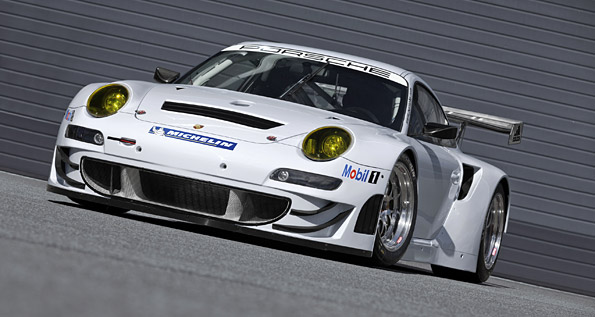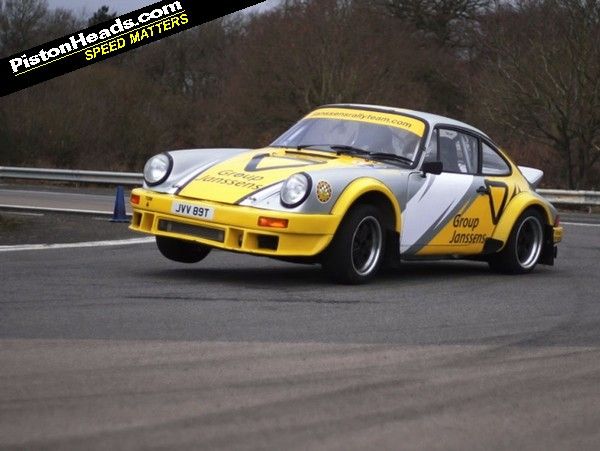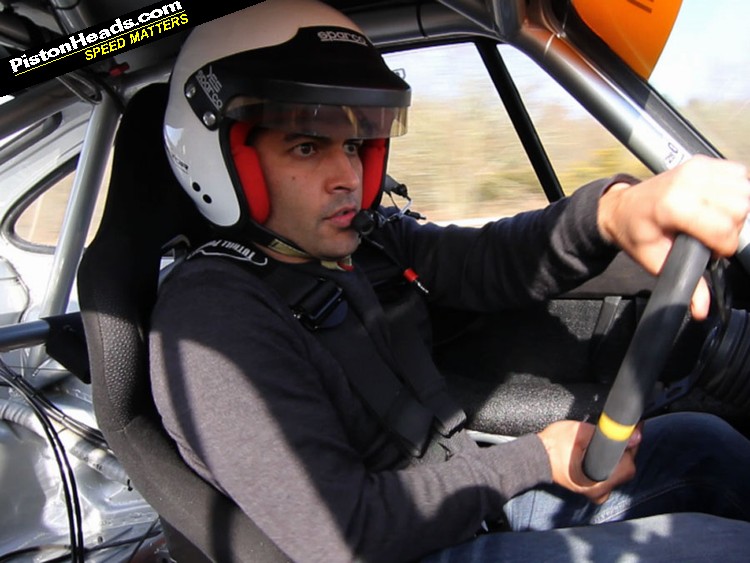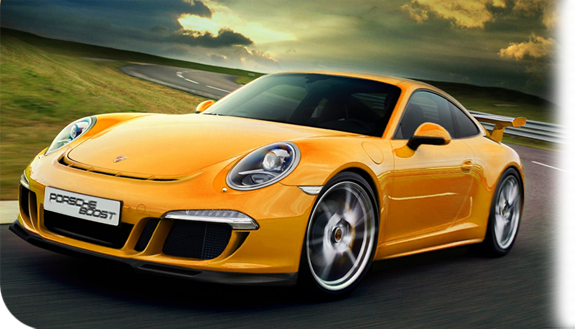Future Porsches - 918 to Pajun...
(Automobile magazine, May 2012)
918 Spyder: The New King Of The Hill
The hottest -- and hardest to get -- future Porsche sports car will be the 918 Spyder, which is well along in its development two years after it debuted as a concept at the Geneva auto show. Conceived as a successor to the 2004 Carrera GT, the 918 Spyder aims to offer even better performance. That's no easy task: the Carrera GT could storm from 0 to 62 mph in 3.9 seconds, was good for a top speed of 205 mph, and lapped the Nordschleife in 7 minutes and 32 seconds. The new car should surpass all of that save top speed, which Porsche projects at 200 mph.
Of course, the Carrera GT was never very good at traveling without gasoline, something the 918 will be able to do for fifteen miles thanks to its 7-kWh lithium-ion battery pack. The 330-pound power pack can crank up 230 hp.
Overboost pushes that to 275 hp, but only for a couple of seconds. The battery pack sits in a niche between the driver and the engine, right below the fuel tank. It feeds two electric motors: one is sandwiched between the V-8 and the seven-speed dual-clutch automatic transmission; the other one drives the front wheels. Power output is in the neighborhood of 110 hp per unit. The 918 will come with a high-voltage wall charger that can fully recharge the batteries in two hours; with a conventional socket it takes seven hours.
The gasoline engine, mounted low in the chassis, is an aluminum 4.6-liter V-8 that started life in Porsche's Class 2 Le Mans prototype, the RS Spyder. Here it will be tuned to about 550 hp. That's less than the Carrera GT's 612 hp, but whereas that car's short-lived V-10 had to rev to 5750 rpm to produce 435 lb-ft, the brand-new V-8 delivers its maximum torque of some 515 lb-ft at a much more relaxed 3500 rpm, although it will rev to a screaming 9000-rpm redline. The combined output from the internal-combustion engine and electric motors will be at least 720 hp. The aggregate twist action works out to an equally impressive 550 lb-ft.
Special features of the 4.6-liter V-8 are titanium connecting rods, a crankcase and cylinder heads made of cast aluminum, a lightweight crankshaft forged from high-strength steel, and a thin-wall exhaust fabricated from a special type of sheet alloy. Dry-sump lubrication is, of course, a must.
The 918 Spyder can drive the rear wheels either by electric motor only, by V-8 only, or by a combination of the two. Add to this the electrically powered front wheels, and you have on-demand four-wheel drive plus torque vectoring for enhanced cornering. The driver will be able to select from five different drive modes via a joystick mounted to the steering wheel (Porsche's answer to the manettino by Ferrari). E stands for purely electric -- it's also front-wheel drive. E, the default mode, is typically used in noise- and emissions-sensitive areas, like the vicinity of the owner's home. Since FWD E-power is limited to 110 hp, the rear e-motor jumps in relatively frequently. After the fifteen- to twenty-mile charge is depleted, the car will switch to hybrid operation.
H denotes hybrid operation, which is the preferred city-driving mode. Then there's Sport Hybrid, which relies on a mix of V-8 and one or two electric motors. Race Hybrid mode ensures that the V-8 keeps charging the power pack at all times and provides electric boost under full acceleration. Last but not least is the Hot Lap button, which briefly unleashes the total power output of the main propulsion battery. Porsche claims that, in the case of the 918 Spyder, a fully charged power pack will improve the lap time at the Nuerburgring by six seconds, to 7 minutes, 22 seconds.

When the concept car was unveiled in 2010, research and development (then under Wolfgang Duerheimer, now masterminded by Wolfgang Hatz) posted a weight target of 3285 pounds, but now that tooling is nearing completion, the number mentioned in informed circles is 3640 pounds (versus 3043 pounds for the Carrera GT). The weight distribution is a slightly tail-happy 43/57 percent. Attached to the chassis is a carbon-fiber monocoque clad with panels made of carbon fiber, aluminum, and magnesium. The drag coefficient is said to be 0.30. The front spoiler consists of two horizontally staggered carbon-fiber blades, the active tail rudder optimizes downforce, and the underbody is completely flush for optimum aerodynamic efficiency.

The suspension layout bears a strong resemblance to the Carrera GT's, sources say, and the magnesium wheels are fitted with 265/35YR-19 Michelins in the front and 335/30YR-20 footwear at the rear. The big news is the standard four-wheel steering -- a first for Porsche. At lower velocities, the rear wheels countersteer for improved maneuverability. At high speeds, they move in sync with the front wheels for superior stability. Under certain driving conditions, the rear wheels are locked in the straight-ahead position. Porsche claims that rear-wheel steering shaves several seconds off the car's Nuerburgring lap time by distributing the cornering forces more evenly between the axles.

As you read these lines, Porsche will have already started conducting track tests with a rolling chassis, and by late summer the first fully dressed mules should hit the road. Production of this groundbreaking supercar is due to start next year, on September 18 (9/18), in the Zuffenhausen factory. Volume is limited to 918 units, and the asking price is a whopping $845,000.
960: Challenging Ferrari
Even as Porsche engineers ready the impossibly advanced 918 Spyder hybrid supercar, they're also putting together an only slightly less exotic coupe that's internally called the 960. Porsche foreshadowed its intent to build such a car when it showed the 918 RSR concept at the 2011 Detroit show. Contrary to the concept's name, however, this sports car will share almost nothing with the Spyder. Instead, the 960 rides on a new mid-engine architecture that will eventually underpin several Lamborghinis as well as the replacement for the next-generation Boxster.
Initially, the 960 was to be powered by a twin-turbo V-8, and it tapped the 918 Spyder for inspiration in terms of design and carbon-fiber structure. But the accountants and the product planners were not happy with this high-end pitch, so we can now expect a more pragmatic approach that revolves around a double-twin-scroll-turbo 4.0-liter flat six good for about 600 hp and 550 lb-ft of torque. Why the change? Because the flat six is more compact, helps to lower the center of gravity, is more efficient as well as slightly cheaper to build, and offers that signature Porsche touch. The 960, which could resemble the illustration below, will be a relative bargain compared with the 918 Spyder, but with a price near $250,000, it still won't be cheap.
More 911s: A No-Brainer
Of course, Porsche's sports car lineup isn't complete without a full array of 911s. The new model, introduced last year, will predictably spin off a dizzying number of variants, including the all-wheel-drive 4S, the Turbo, and a GT3. Porsche also will live up to its tradition of making customers pay more for less equipment with a decontented, lightweight Clubsport package.

One major new twist involves the 911 Targa, which debuts in early 2014. In recent years, it's been little more than a glorified sunroof, but Porsche wants to recreate the much-loved late-1960s/'70s Targa, which was available with a folding removable top and a heated glass backlight. The most prominent design detail of this classic Porsche roof treatment was the substantial roll bar available in anodized silver or matte black. The modern iteration of the classic Targa theme should look particularly striking thanks to a lower roofline, a more radically angled roll bar, and a wraparound rear window. The optional Turbo-look body style, which will likely be offered across the 911 lineup, will add an even-more-voluptuous rear end and optional twenty-one-inch wheels.
Macan: A Smaller SUV
The vehicle previously known as the Cajun (Cayenne Junior) will officially be called the Macan. Porsche says the name is derived from the Indonesian word for tiger. Porsche's second SUV will launch as a four-door in the fall of 2013. As our spy illustrations indicate, it should look somewhat familiar since the greenhouse and the basic structure are taken from the Audi Q5, but the Macan will have its own body panels and interior. Other Porsche-specific touches include a Sport Chrono pack with launch control, stronger brakes with optional carbon-ceramic discs, larger wheels, and a new exhaust system with a switchable free-flow sport muffler.
The powertrains also come from Audi and include a 2.0-liter four-cylinder and a 3.0-liter V-6 producing about 240 hp and 290 hp, respectively. In addition, there's a Macan Turbo S in the works. It features Porsche's own heavily tweaked 3.0-liter twin-turbo V-6 rated at 350 hp. Also planned is a Macan Hybrid, fitted with a 230-hp four-cylinder complemented by a 50-hp electric motor.
Likely but not yet confirmed is a two-door model, due in 2014. Mind you, this is the version that Audi would have preferred Porsche concentrate on to begin with, but Porsche wants the four-door volume. And, indeed, executives are expecting a lot of volume -- some 50,000 Macans a year.
Panamera and Pajun: More Four-Doors
Approximately one year from now, Porsche will launch the Panamera XXL, a stretched version of its luxury sedan sporting a 5.9-inch-longer wheelbase. At the same time, the car is due to undergo a comprehensive face-lift. That will carry the Panamera out to 2015, when we will see the follow-up version. It will be lighter, not quite as big, and better suited for sporty derivatives. The second-generation Panamera will use a new architecture known as MSB-F. This acronym denotes a front-mid-engine modular rear-wheel-drive or all-wheel-drive layout. MSB-F is being developed in Weissach for Porsche, Bentley, and Lamborghini.

A smaller Porsche sedan is still known by its code name, Pajun, short for Panamera Junior. The Pajun uses the same flexible components set as its bigger sibling and will appear in 2016. It debuts as a four-door four-seater but over time will spawn a convertible and a coupe or sporty hatchback. It's described as an antiestablishment sedan -- sharp, striking, and spirited. Its three-box shape should help avoid cannibalization with the larger Panamera, which is expected to retain its egg-shaped, 911-inspired rear end.
As far as powertrains go, Porsche is the driving force behind the new modular V engines that will be used by all the premium brands in the Volkswagen Group. Starting in 2013-14, the Panamera/Pajun and the Cayenne/Macan are expected to become available with a range of much-improved turbocharged engines. We expect a 3.0-liter V-6 (slated to produce about 400 hp and 400 lb-ft of torque), a 3.6-liter V-8 (500 hp and 500 lb-ft), a 4.0-liter V-8 (550 hp, 515 lb-ft), and a high-performance S edition likely to churn out 550 hp and more than 515 lb-ft. Alternatively, there will be a pair of Audi-sourced 3.0-liter V-6 turbo-diesel units rated at about 245 hp and 325 hp. In addition, we'll see an uprated 4.2-liter V-8 TDI, which should muster some 365 hp. Also in the works are two plug-in hybrids, one with a 220-hp four-cylinder and the other with a 330-hp V-6, both hooked to a pair of electric motors that add at least another 135 hp to the grand total.
Once the Pajun has been established in the marketplace, Porsche's total production output should exceed 200,000 vehicles per year.
-- Automobile article by Georg Kacher































































